Effective Waste Disposal in House Clearances
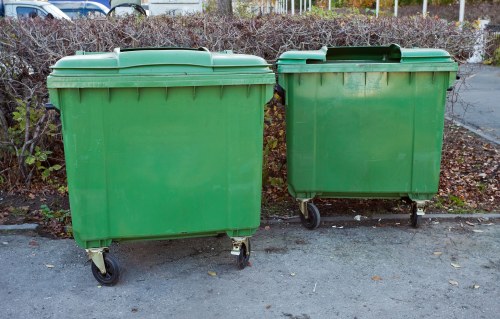
Introduction to House Clearance Waste Disposal
House clearances involve the thorough removal of unwanted items from a property, whether it's due to moving, downsizing, or estate management. A critical aspect of this process is waste disposal, which ensures that items are handled responsibly and in compliance with local regulations. Proper waste disposal not only helps in maintaining environmental standards but also minimizes the stress associated with clearing a home.
Understanding the various methods and best practices for waste disposal can make house clearances more efficient and less overwhelming. This guide provides a comprehensive look into waste disposal during house clearances, highlighting key considerations, strategies, and benefits.
Whether you're planning a house clearance yourself or hiring professionals, knowing the ins and outs of waste management will empower you to make informed decisions and contribute positively to the environment.
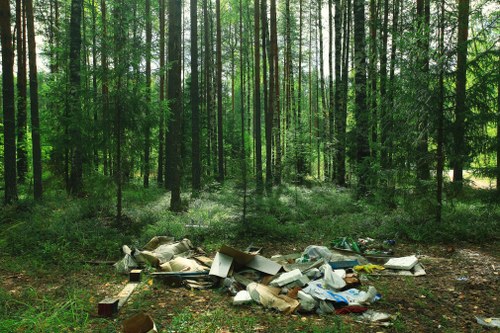
Types of Waste Generated During House Clearances
House clearances can generate a diverse range of waste materials, each requiring specific disposal methods. Identifying these types is the first step in effective waste management:
- General Waste: Includes everyday household items like broken furniture, worn-out appliances, and miscellaneous debris.
- Recyclable Materials: Items such as paper, cardboard, glass bottles, and certain plastics that can be processed and reused.
- Electronic Waste (E-Waste): Discarded electronics like old TVs, computers, and kitchen appliances that require specialized recycling.
- Hazardous Waste: Items that pose environmental or health risks, including paint, chemicals, batteries, and certain types of light bulbs.
- Bulky Waste: Large items like mattresses, sofas, and large appliances that require specific disposal methods due to their size.
Proper categorization of waste ensures that each type is handled appropriately, reducing the environmental impact and complying with local waste disposal regulations.
Implementing a sorting system during the clearance process can streamline waste management and make recycling or disposal more efficient.
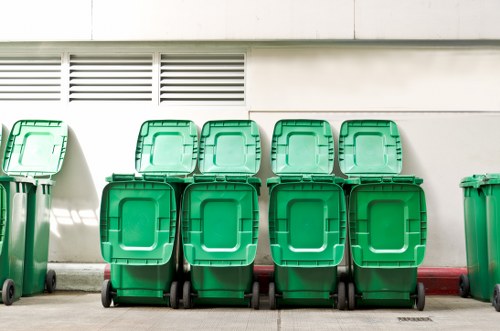
Environmental Impact of Proper Waste Disposal
Reducing Landfill Usage
One of the primary benefits of proper waste disposal is the reduction in landfill usage. By recycling and reusing materials, the volume of waste sent to landfills decreases, prolonging their lifespan and mitigating the environmental issues associated with overfilled landfills.
Conserving Natural Resources
Recycling materials like paper, metal, and glass conserves natural resources by reducing the need for raw material extraction. This conservation helps preserve ecosystems and decreases the energy consumption required for manufacturing new products.
Mitigating Pollution
Proper disposal of hazardous waste prevents the contamination of soil and water sources, safeguarding public health and the environment. Ensuring that chemicals and other harmful substances are disposed of safely is crucial in preventing pollution.
Promoting Sustainable Practices
Adopting sustainable waste disposal practices fosters a culture of environmental responsibility. It encourages individuals and communities to think critically about their consumption and disposal habits, leading to more sustainable living.
Long-Term Environmental Benefits
The cumulative effect of responsible waste disposal contributes to long-term environmental health. It plays a vital role in combating climate change, reducing greenhouse gas emissions, and promoting biodiversity.
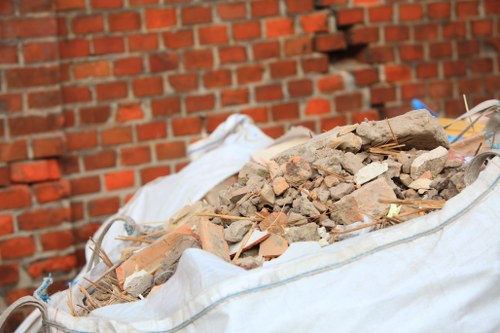
Best Practices for Waste Disposal in House Clearances
Planning and Organization
Effective waste disposal begins with careful planning and organization. Develop a clear strategy that outlines the steps for sorting, storing, and disposing of different types of waste. Allocate sufficient time and resources to ensure the process runs smoothly.
Sorting and Segregation
Sort items into categories such as recyclables, general waste, e-waste, and hazardous materials. Use clearly labeled bins or designated areas to keep each category separate, making it easier to handle each type appropriately.
Engaging Professional Services
Hiring professional house clearance services can significantly enhance waste disposal efforts. Professionals have the expertise and resources to manage large volumes of waste efficiently, ensuring compliance with regulations and maximizing recycling opportunities.
Utilizing Recycling Centers
Take advantage of local recycling centers to dispose of recyclable materials. These centers are equipped to handle different types of waste, ensuring that items are processed correctly and sustainably.
Responsible Disposal of Hazardous Materials
Ensure that hazardous materials are disposed of through specialized services to prevent environmental contamination. Follow local guidelines and regulations for the safe handling and disposal of these items.
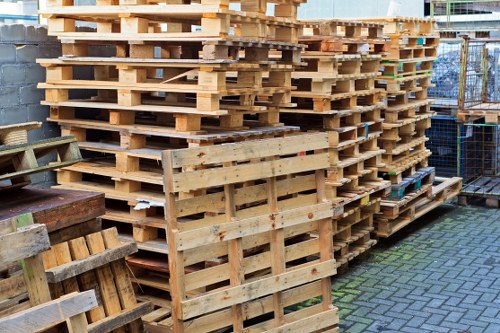
Legal Considerations in Waste Disposal
Understanding Local Regulations
Waste disposal laws vary by location, making it essential to understand and adhere to local regulations. Familiarize yourself with guidelines regarding the disposal of specific waste types, collection schedules, and prohibited items.
Obtaining Necessary Permits
For large-scale waste disposal or the handling of hazardous materials, permits may be required. Ensure that you obtain all necessary permits to avoid legal complications and potential fines.
Compliance with Environmental Standards
Adhering to environmental standards ensures that waste disposal practices do not harm the ecosystem. Compliance demonstrates a commitment to sustainability and responsible waste management.
Penalties for Non-Compliance
Failing to comply with waste disposal regulations can result in significant penalties, including fines and legal action. Staying informed and compliant helps prevent unwanted legal issues and promotes responsible behavior.
Implementing Best Practices for Compliance
Establish best practices within your waste disposal process to ensure ongoing compliance. Regularly review and update your procedures in line with changing regulations and standards.
Maximizing Recycling Opportunities
Recycling plays a pivotal role in effective waste disposal during house clearances. By maximizing recycling opportunities, you can reduce the overall environmental footprint of the clearance process. Here are some strategies to enhance recycling efforts:
- Identify Recyclable Items: Familiarize yourself with local recycling guidelines to know which items can be recycled. Common recyclables include paper, glass, certain plastics, and metals.
- Use Separate Bins: Clearly designate separate bins for recyclables, general waste, and hazardous materials to streamline the sorting process.
- Partner with Recycling Services: Collaborate with local recycling services or facilities to ensure that recyclable materials are processed correctly.
- Educate Household Members: Inform all involved parties about the importance of recycling and how to properly sort materials.
By implementing these strategies, you can significantly increase the amount of waste that is recycled, contributing to environmental sustainability.
Additionally, consider donating usable items to charities or second-hand stores, further extending the life of certain products and reducing waste.
Reducing Waste During House Clearances
Minimizing the amount of waste generated during house clearances is another effective approach to responsible waste management. Here are some tips to reduce waste:
- Plan Ahead: Organize the clearance process to avoid unnecessary purchases that may become waste.
- Repurpose Items: Find new uses for items that are no longer needed, such as turning old furniture into new pieces.
- Sell or Donate: Sell or donate items in good condition instead of discarding them.
- Opt for Minimal Packaging: Choose products with minimal packaging to reduce the volume of waste generated.
Implementing these practices not only reduces waste but also promotes a more sustainable and environmentally responsible clearance process.
By focusing on waste reduction, you can make house clearances more efficient and less impactful on the environment.
Choosing the Right Waste Disposal Services
Selecting the appropriate waste disposal services is crucial for effective house clearances. Consider the following factors when making your choice:
- Reputation and Reliability: Research service providers to ensure they have a good reputation and reliable track record in waste disposal.
- Range of Services: Choose services that offer comprehensive waste management solutions, including recycling, hazardous waste disposal, and general waste removal.
- Compliance with Regulations: Ensure that the service provider complies with local waste disposal regulations and environmental standards.
- Cost-Effectiveness: Compare pricing to find services that offer quality waste disposal solutions within your budget.
By carefully selecting the right waste disposal services, you can streamline the house clearance process and ensure responsible handling of all waste materials.
Additionally, professional services can provide valuable advice and support, making the clearance process smoother and more efficient.
Benefits of Proper Waste Disposal in House Clearances
Ensuring proper waste disposal during house clearances offers numerous benefits, including:
- Environmental Protection: Responsible waste management helps protect the environment by reducing pollution and conserving natural resources.
- Health and Safety: Proper disposal of hazardous materials minimizes health risks and prevents accidents.
- Legal Compliance: Adhering to waste disposal regulations helps avoid legal penalties and ensures compliance with local laws.
- Cost Savings: Efficient waste management can reduce disposal costs by maximizing recycling and minimizing landfill usage.
- Peace of Mind: Knowing that waste is being handled responsibly provides peace of mind during the often stressful house clearance process.
Implementing proper waste disposal practices enhances the overall effectiveness and sustainability of house clearances.
Moreover, it fosters a sense of responsibility and contributes to a cleaner, healthier community.
Technological Innovations in Waste Disposal
Advancements in technology have significantly improved waste disposal methods, making them more efficient and environmentally friendly. Here are some key innovations:
- Automated Sorting Systems: Automated systems use robotics and AI to sort waste materials accurately, increasing recycling rates and reducing human error.
- Waste-to-Energy Technologies: These technologies convert non-recyclable waste into usable energy, reducing landfill dependency and providing alternative energy sources.
- Smart Waste Management: IoT devices and smart sensors monitor waste levels and optimize collection routes, enhancing efficiency and reducing operational costs.
- Biodegradable Materials: The development of biodegradable products helps reduce long-term environmental impact by ensuring waste breaks down naturally.
Integrating these technological advancements into waste disposal practices can enhance the effectiveness and sustainability of house clearances.
Embracing innovative solutions ensures that waste disposal remains efficient and aligned with global sustainability goals.
Community Engagement and Education
Engaging the community and educating individuals about proper waste disposal practices are vital for the success of house clearances. Here's how to foster community involvement:
- Awareness Campaigns: Conduct campaigns to inform residents about the importance of responsible waste disposal and the available resources.
- Workshops and Seminars: Organize educational events to teach best practices in waste management and recycling.
- Collaborative Initiatives: Partner with local organizations and authorities to promote community-wide waste disposal programs.
- Incentive Programs: Implement programs that reward individuals and households for recycling and reducing waste.
By fostering community engagement and education, you can create a supportive environment for effective waste disposal during house clearances.
Empowered and informed communities are more likely to participate actively in sustainable waste management practices.
Case Studies: Successful Waste Disposal in House Clearances
Examining real-world examples can provide valuable insights into effective waste disposal strategies. Here are a couple of case studies:
Case Study 1: Sustainable Homes Ltd.
Sustainable Homes Ltd. implemented a comprehensive waste disposal plan during a large-scale house clearance project. By utilizing automated sorting systems and partnering with local recycling centers, they achieved a recycling rate of 75%. Additionally, they donated over 200 items to local charities, significantly reducing landfill waste.
Case Study 2: Green Estate Clearances
Green Estate Clearances focused on minimizing environmental impact by using waste-to-energy technologies for non-recyclable materials. Their approach not only reduced landfill dependency but also generated energy that was reinvested into community projects. Their efforts led to recognition from local environmental bodies and increased client trust.
Future Trends in Waste Disposal for House Clearances
The landscape of waste disposal is continually evolving, influenced by technological advancements and changing societal values. Anticipated future trends include:
- Increased Automation: Further automation in sorting and processing waste will enhance efficiency and accuracy in recycling operations.
- Circular Economy Models: Emphasis on circular economy practices will promote the reuse and repurposing of materials, minimizing waste generation.
- Enhanced Recycling Technologies: Innovations in recycling technology will allow for a broader range of materials to be processed, increasing overall recycling rates.
- Greater Public Awareness: Rising environmental consciousness will drive more individuals and businesses to adopt sustainable waste disposal practices.
- Policy Developments: Stricter regulations and incentives will encourage better waste management and recycling efforts.
Staying informed about these trends will help you adapt your waste disposal strategies to future developments, ensuring continued effectiveness and sustainability.
Proactive adoption of emerging trends can position you as a leader in responsible waste management within the house clearance industry.
Conclusion: The Importance of Responsible Waste Disposal
Responsible waste disposal is a cornerstone of successful house clearances. It ensures that unwanted items are handled in an environmentally friendly manner, complying with regulations and reducing the overall ecological footprint. By implementing effective waste management strategies, utilizing professional services, and engaging the community, house clearances can be conducted smoothly and sustainably.
Embracing best practices in waste disposal not only benefits the environment but also enhances the efficiency and reputation of the clearance process. As we move towards a more sustainable future, the importance of responsible waste management in house clearances will continue to grow.
Contact us today to learn more about our house clearance services and how we can help you manage waste responsibly.
Book your service now and take the first step towards an eco-friendly house clearance experience.